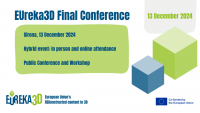3D digitisation of cultural relics opened up new applications and uses that were not possible or cost effective in the past. First, 3D rendering facilitates the continuous evaluation and analysis of the relics without touching the physical object itself, thus improving the safety of the already fragile relics. Secondly, the 3D renderings are very suitable to be included into interactive product presentations, manuals, journals, technical literature and sales brochures. Thirdly, it could improve and facilitate the dialogue between museums and other cultural sectors.
Moreover, archiving the complete digital data of cultural objects, either as point clouds or model surfaces, forms the basis of preserving cultural heritage artifacts. Thanks to the completeness and accuracy of the scan data, the scanned objects are in fact a faithful representation of the real cultural objects.
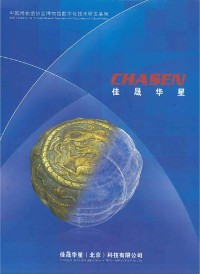 Sino-sin is a company based in Beijing (China) which is a leader in the field of 3D high resolution digital imaging of cultural heritage relics and museums. Sino-sin is today recognised as a key plater in the digital preservation of cultural heritage object in China. It is also the only R&D centre appointed by the Museum Association of China for “Digitisation Technologies, Techniques and Standards for Cultural Relics”.
Sino-sin is a company based in Beijing (China) which is a leader in the field of 3D high resolution digital imaging of cultural heritage relics and museums. Sino-sin is today recognised as a key plater in the digital preservation of cultural heritage object in China. It is also the only R&D centre appointed by the Museum Association of China for “Digitisation Technologies, Techniques and Standards for Cultural Relics”.
Making use of the latest technology in scanning hardware and data processing software, Sino-sin engineered a system which provides a complete range of 3D digitisation services for cultural heritage relics and museums, among which 3D data processing, texturing & rendering and 3D scanning solutions to overcome critical scanning issues in complex geometry, reflective and dark surfaces. From the scan data it is also possible to build aesthetic surface models of the relics, to enhance some details or to modify and spatially manipulate them, thus enabling a great number of viewing and presentation possibilities. These models can be then restored to the original state of the physical relic.
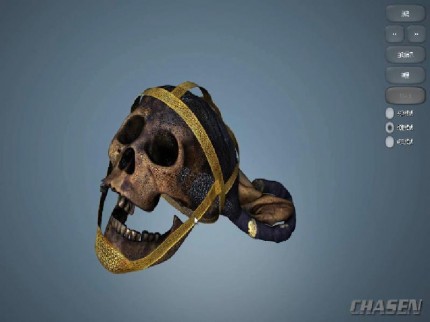 Moreover, Sino-sin also delevoped several other specific modules, according to the needs and requirements of the museums, to facilitate the management of their 3D data, such as a 3D data simplification platform, a 3D model viewing and a measurement platform. Up to now, Sino-sin has successfully digitised more than 200 pieces of relics for the Inner Mongolia Museum, designed and produced multi media creations for Tianjin Museum and performed digitisation for Xi’an Museum.
Moreover, Sino-sin also delevoped several other specific modules, according to the needs and requirements of the museums, to facilitate the management of their 3D data, such as a 3D data simplification platform, a 3D model viewing and a measurement platform. Up to now, Sino-sin has successfully digitised more than 200 pieces of relics for the Inner Mongolia Museum, designed and produced multi media creations for Tianjin Museum and performed digitisation for Xi’an Museum.
Sino-sin’s 3D model development service is composed of 2 main parts.
- Acquisition of data through a range of 3D scanners. This process is repeated until the whole visible surface of the object is captured from many different angles. These highly dense datasets form the basis of most of the 3D models.
- High resolution photography. High resolution photographs of each relic are taken again from many different angles for the mapping of the texture.
The scan data can be used in many different application contexts. Examples are:
- Exibitions and interactive presentations. The 3D format enormously increases the range of presentation possibilities for the museums and enhances the storage of cultural heritage data, thus improving access for the consumers.
- Relic packaging. After a 3 dimensional scan of the relic has been produced through the latest laser and structured light technologies, the accurate profile of the relic will be used to design a perfect fitting mould. This mould will be then CNC cut by the milling machines on specially selected materials and the suitable external packaging for the relics will be built according to given requirements.
- Relic research & restoration. 3D digitizing captures the geometry of the relic and converts it into a digital format. This digital format can be converted to a polygon which can be selected, measured and spatially manipulated for close up analysis and research purposes. Moreover, the 3D scan data can be also used to reconstruct missing pieces of artifacts and for 3D dimensional and geometrical analysis.
As digital technology evolves, 3D data is increasingly preferred as a method of preserving cultural heritage artifacts. It provides an easy way to get in touch with them and significantly reduces the need for physical storage space, offering to museums and related organizations a portable and accessible platform to exchange information and to researchers the possibility to easily browse and review the materials.
3D scanning solutions will be next generation in archiving, preserving and restoring art and cultural hetitage artifacts for China and the rest of the world.


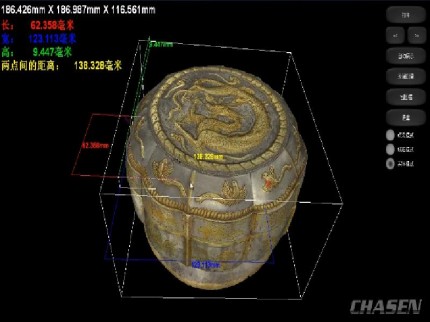















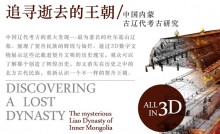
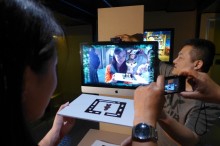
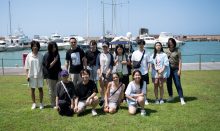
 If you have interesting news and events to point out in the field of digital cultural heritage, we are waiting for your contribution.
If you have interesting news and events to point out in the field of digital cultural heritage, we are waiting for your contribution.










